LONDON UNDERGROUND HISTORY
Leicester Square station history Find out more at
www.ltmuseum.co.uk Leicester Square station opened in 1906, as part of the Great Northern, Piccadilly and Brompton Railway (now the Piccadilly line).
In the following year, services on the Charing Cross. Euston and Hampstead Railway (now the Northern line) also began calling at the station.
Like other deep tube stations of the Edwardian era, it was designed by architect Leslie Green, and features his signature oxblood terracotta faience exterior. If you look very carefully at the façade on Cranbourn Street, you’ll be able to spot two crossed cricket bats embossed in the tiling - the mark of John Wisden and Company, known for publishing the Cricketers’ Almanack.
The station was rebuilt in the early 1930s, to designs by architect Charles Holden. These feature white Portland stone façades rising from the street like a monument. When entering the station, look for the geometric pattern on the blue tile banding on the walls. This pattern is actually an interlocked ’LT’, standing for London Transport.
Both sets of platforms were renovated in the 1980s, with a geometric banding motif added to the tops and bottoms of the platform walls. It is meant to look like a spool of film. On the Piccadilly line platforms, neon light patterns adorn the entrances.
[Images]
1935: One of the new entrances to the station designed by Charles Holden, shortly after its opening
1941: Linens were stored at Leicester Square station for those sheltering from air raids during the Second World War
1947: This route indicator machine lit up when a customer pressed a button denoting their destination
1989: The film strip banding along the tiles can be seen at the top and bottom of this picture of colourful advertisements
MAYOR OF LONDON
Logo of the Underground
TRANSPORT FOR LONDON - EVERY JOURNEY MATTERS
© TFL courtesy of the London Transport Museum
46

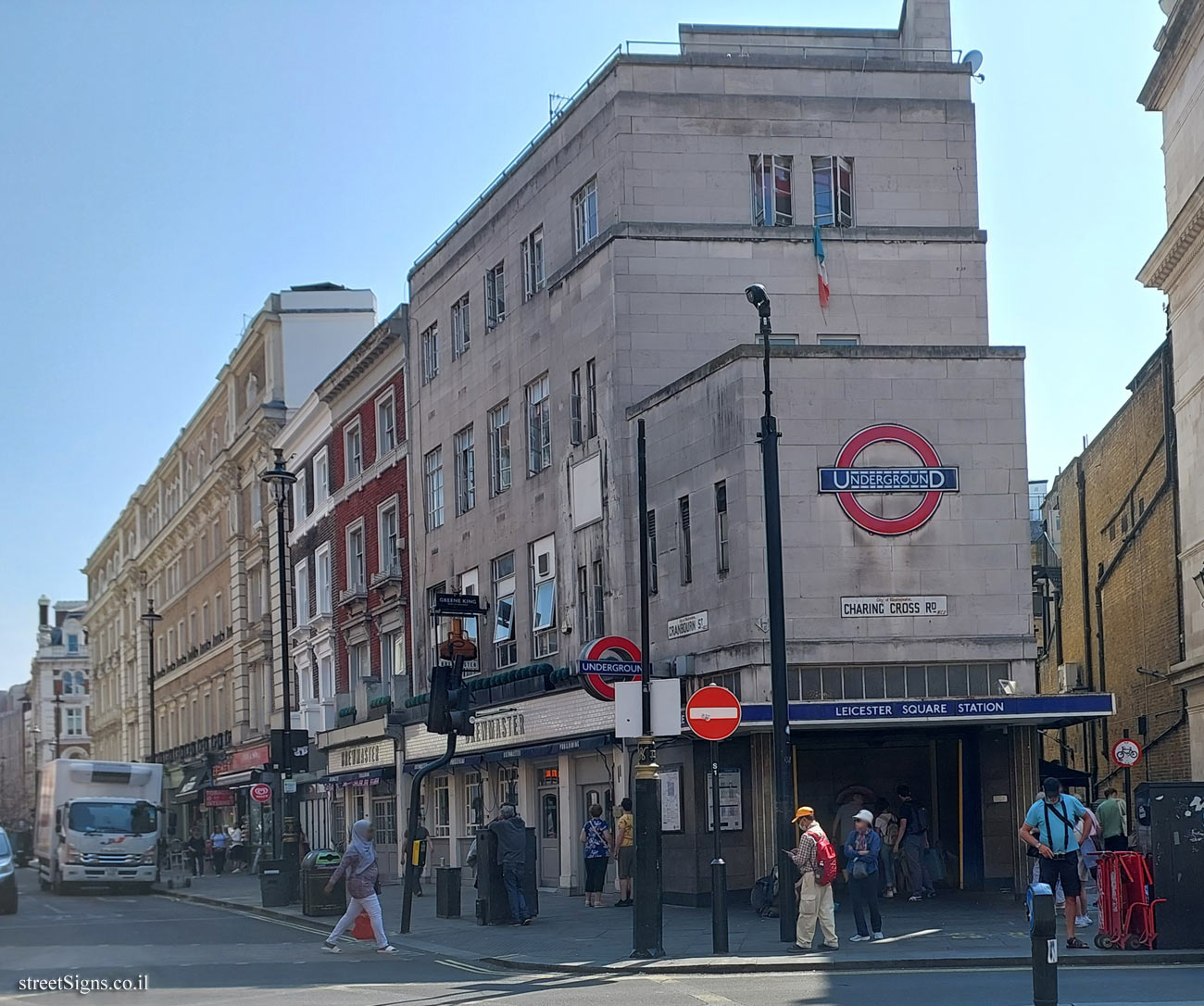 Click for a larger image
Click for a larger image 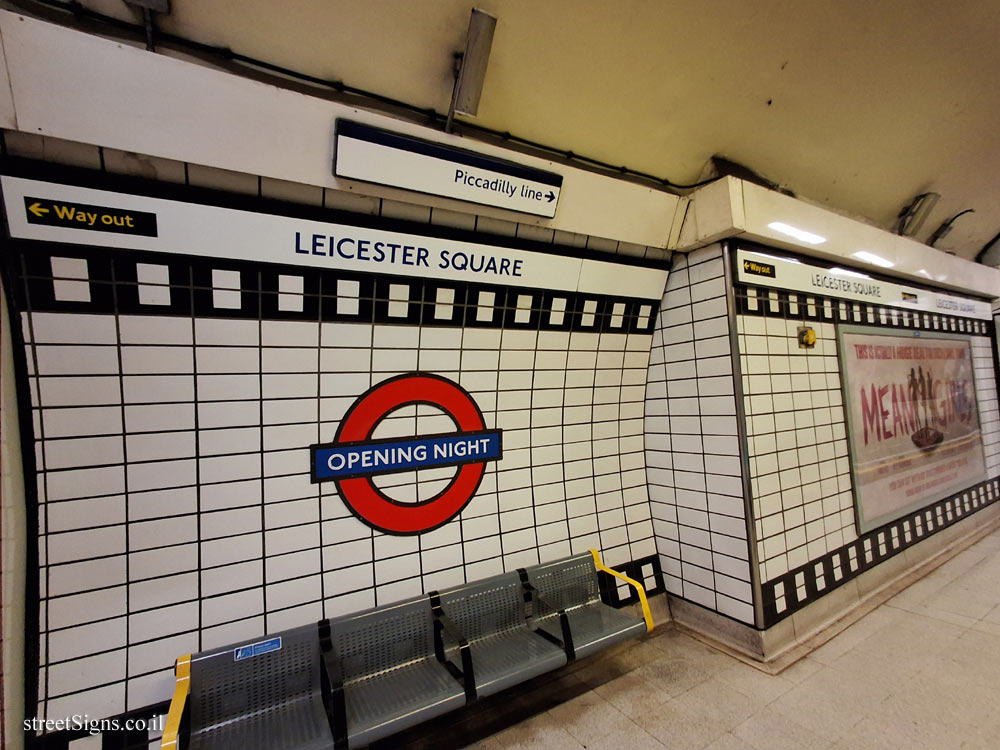 Click for a larger image and in 2024
Click for a larger image and in 2024 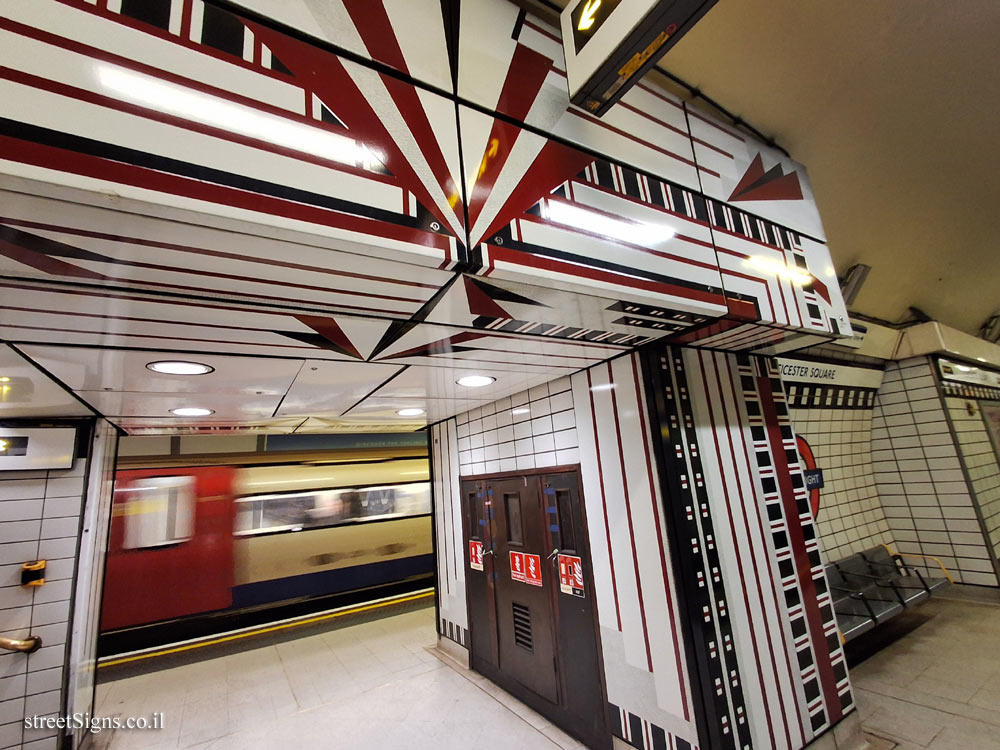 Click for a larger image
Click for a larger image 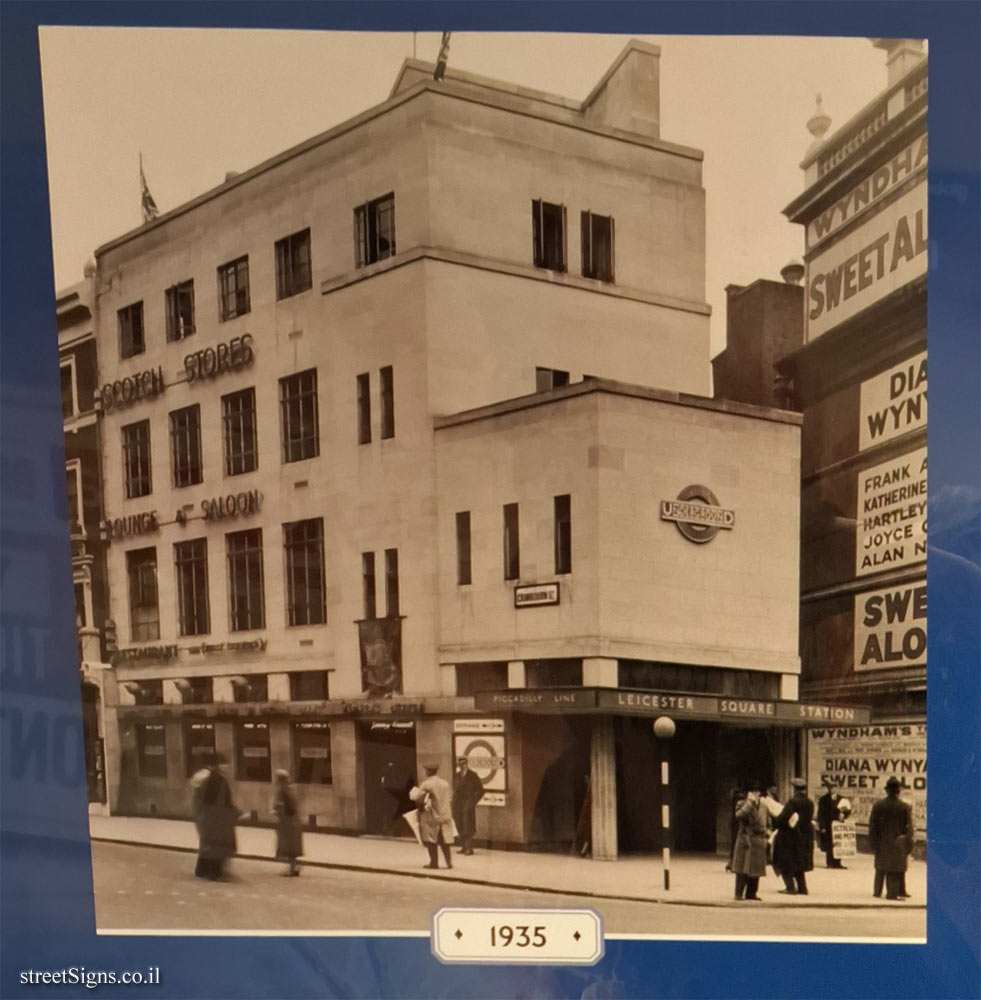 Click for a larger image - 1935 station entrance designed by Charles Holden,
Click for a larger image - 1935 station entrance designed by Charles Holden, 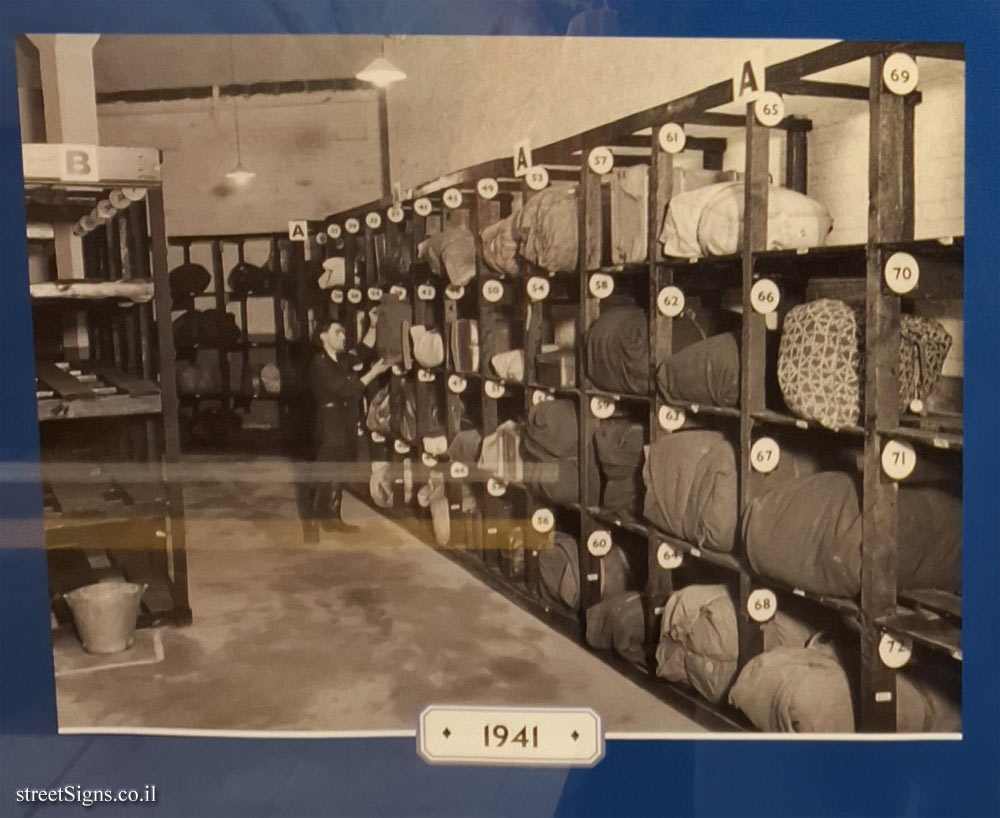 Click for a larger image - 1941 Linens for shelter seekers from the air raids in World War II,
Click for a larger image - 1941 Linens for shelter seekers from the air raids in World War II, 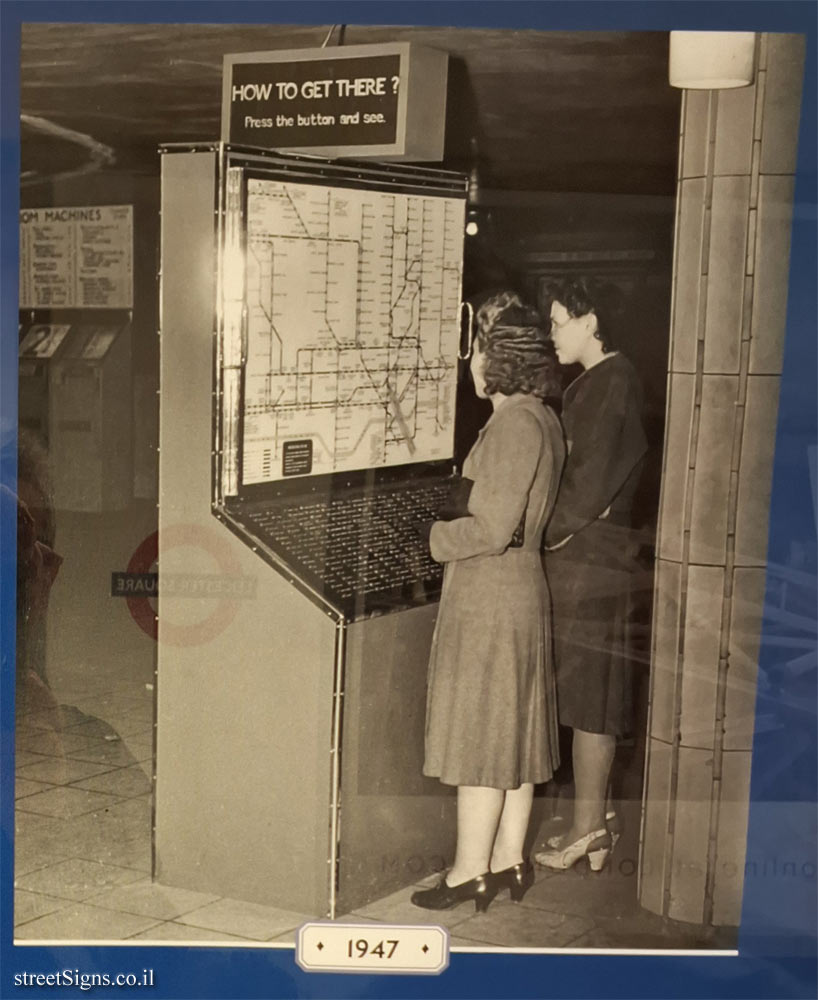 Click for a larger image - 1947 A device that illuminates the desired travel route
Click for a larger image - 1947 A device that illuminates the desired travel route 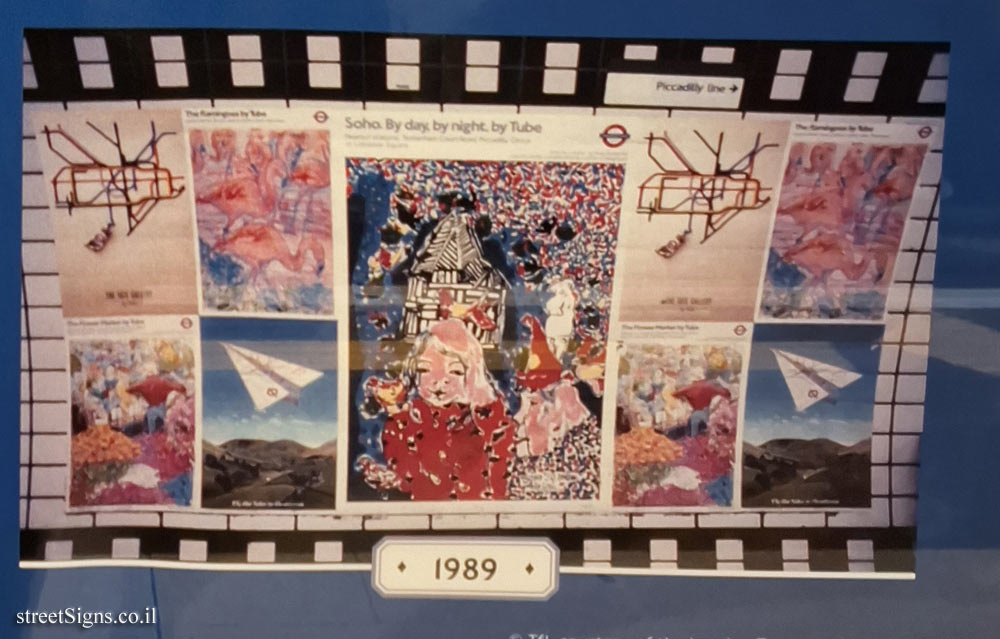 Click for a larger image - 1989 The stripes reminiscent of photographic film.
Click for a larger image - 1989 The stripes reminiscent of photographic film. 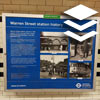 Click for all signs belonging to London Underground History
Click for all signs belonging to London Underground History
 285 Meter |
285 Meter |  593 Meter |
593 Meter |  821 Meter |
821 Meter |  1.19 Km |
1.19 Km |  1.21 Km
1.21 Km